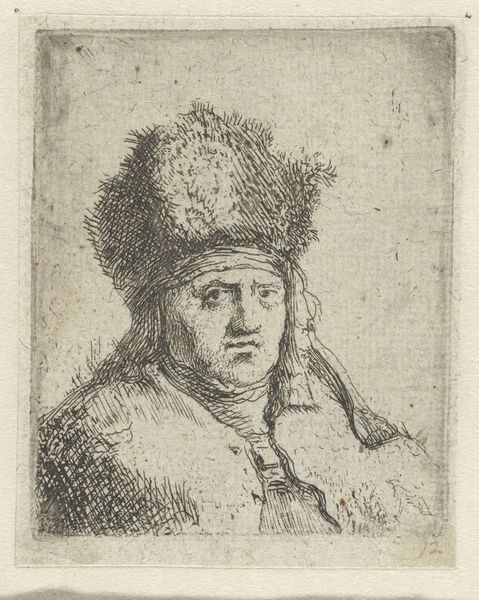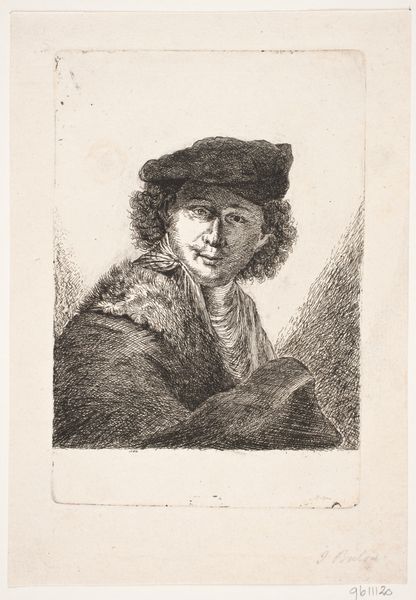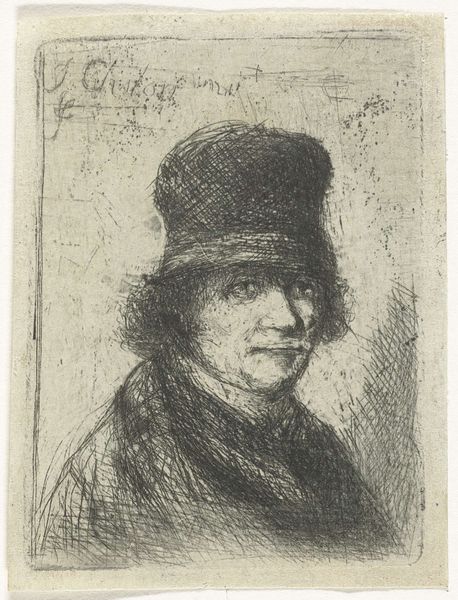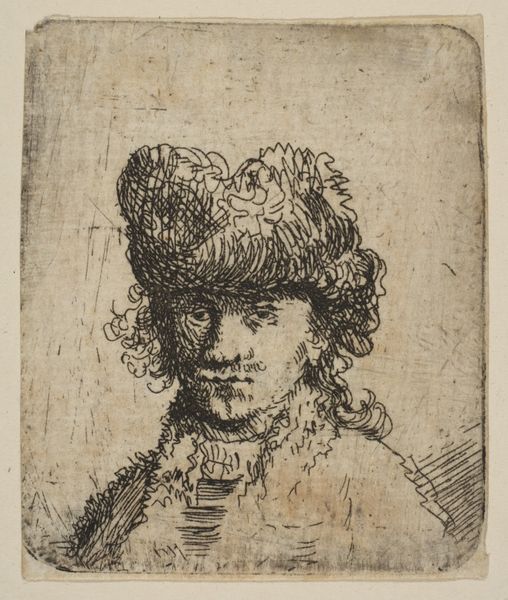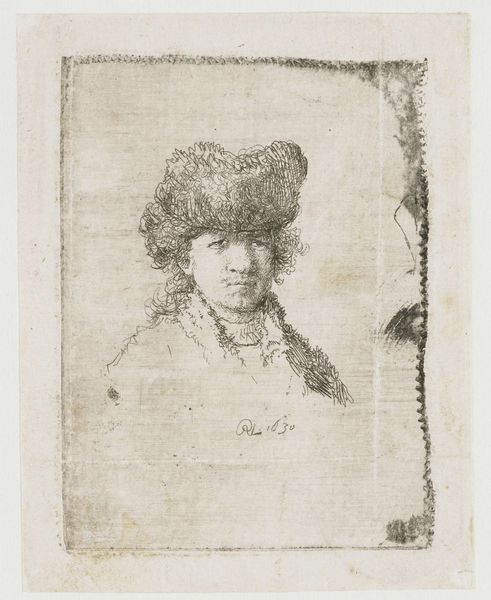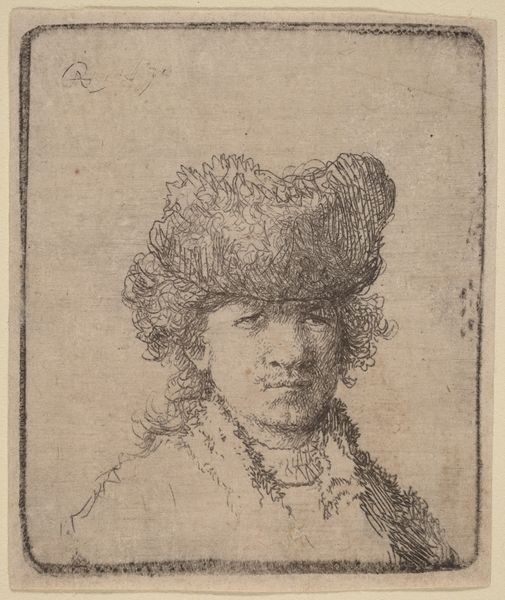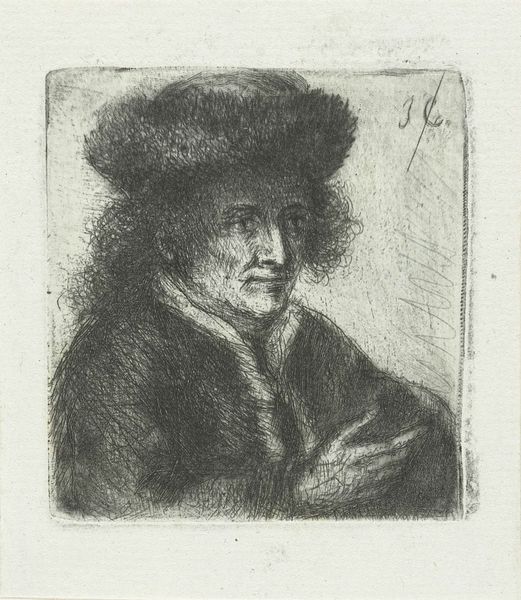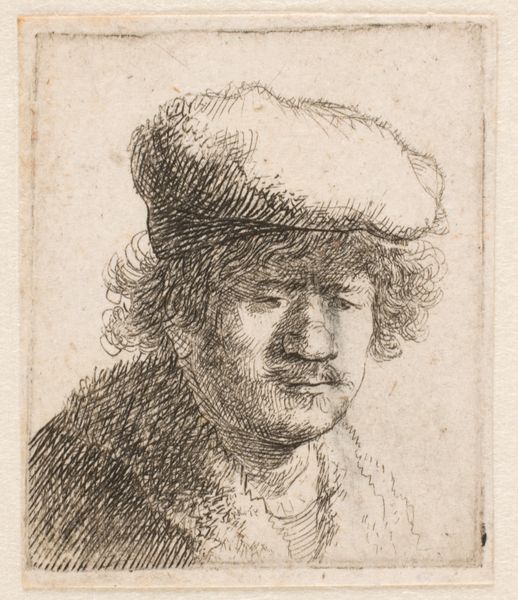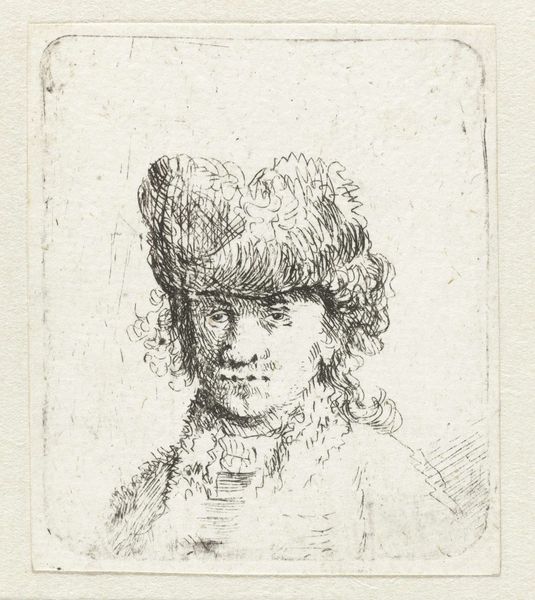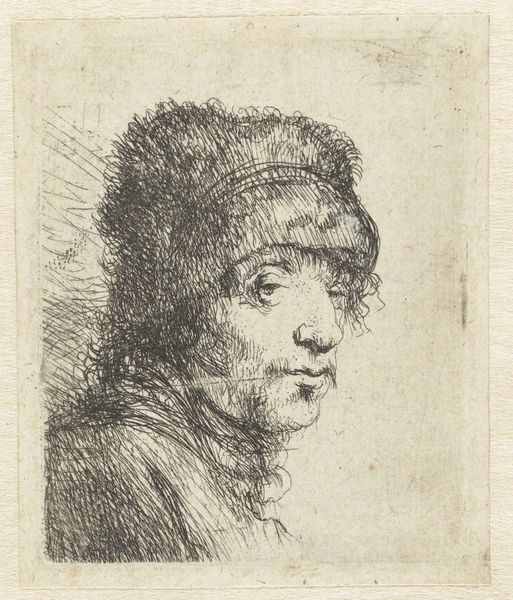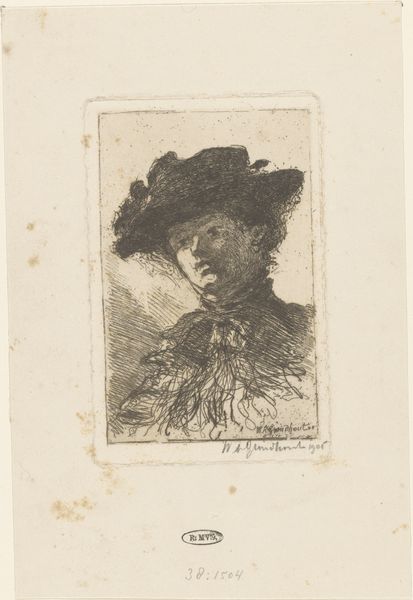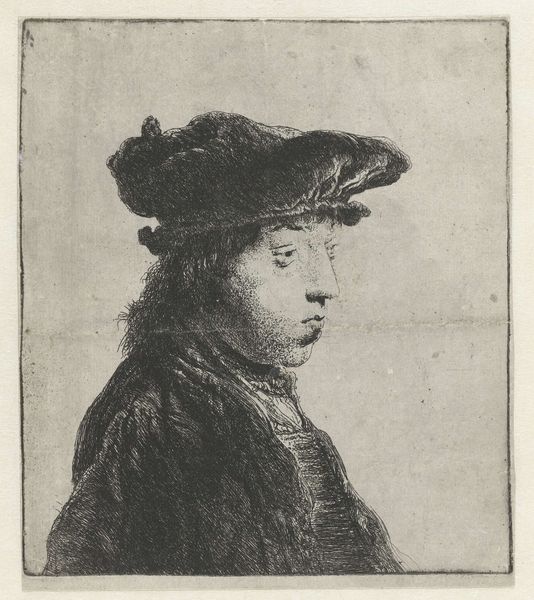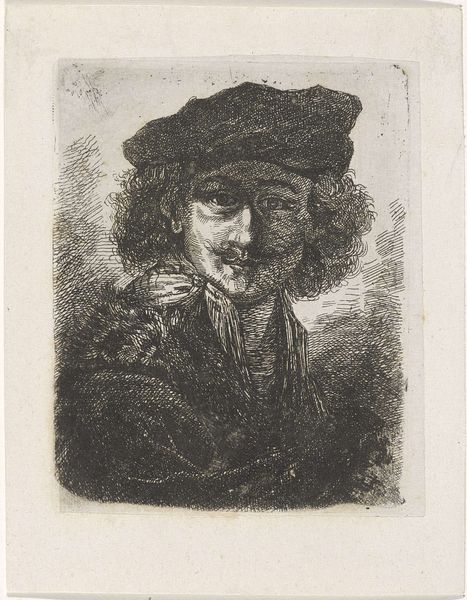
print, etching, graphite, engraving
#
portrait
#
toned paper
#
self-portrait
#
baroque
#
dutch-golden-age
# print
#
etching
#
graphite
#
engraving
Dimensions: height 52 mm, width 50 mm
Copyright: Rijks Museum: Open Domain
Curator: Immediately striking, wouldn't you say? The flurry of line work and stark tonal contrast creates a raw, almost unfinished energy. Editor: Absolutely. What you're seeing now is “Portrait of Rembrandt with a Fur Cap,” attributed to Rembrandt van Rijn, likely created between 1630 and 1700. It’s currently held at the Rijksmuseum. What's intriguing is the process here. It’s not painting; it is an etching and engraving on toned paper, likely employing both graphite and ink. Curator: Indeed, that use of engraving and etching brings forth so many interesting ideas around production of art during that period. Prints like these made Rembrandt’s image, and thus his brand, more accessible. How might we consider the societal and economic functions this piece performed for the artist? Editor: The "brand" concept is spot on. Consider the historical context: self-portraiture during this period was less about vanity and more about establishing artistic identity and agency. How does Rembrandt choose to portray himself? Not as an aristocrat, but in everyday attire – that of the bourgeois craftsman. Curator: The fur cap is certainly curious, suggesting a certain level of affluence while remaining utilitarian in essence. It provides both insulation and indication of social standing within the Dutch society of his time. Editor: I wonder if that accessibility of self-image led to democratization, allowing him to participate in visual culture more widely, which challenges aristocratic artistic norms. Also, is there something inherently queer about its focus on personal expression and visual representation as a precursor of photographic studio portraits of the future? Curator: You’re posing essential questions around consumption and meaning within this artistic piece. These considerations can challenge and question the rigid hierarchies frequently surrounding artwork production within art institutions. The blurring of lines in its manufacturing allows for us to re-evaluate the role and importance surrounding art in wider societal discussions. Editor: Right. Seeing it in the context of Rembrandt's broader career, one might also question to whom he made these self-portraits available, for what cost, and with which gendered expectations in mind? Curator: A remarkable discussion we've just had around "Portrait of Rembrandt with a Fur Cap," with observations and ideas interweaved around technique and creation to societal considerations of this piece. Editor: Definitely, an exploration that reminds us to not only see the art but question who gets to create, to circulate, and whose image matters.
Comments
No comments
Be the first to comment and join the conversation on the ultimate creative platform.
